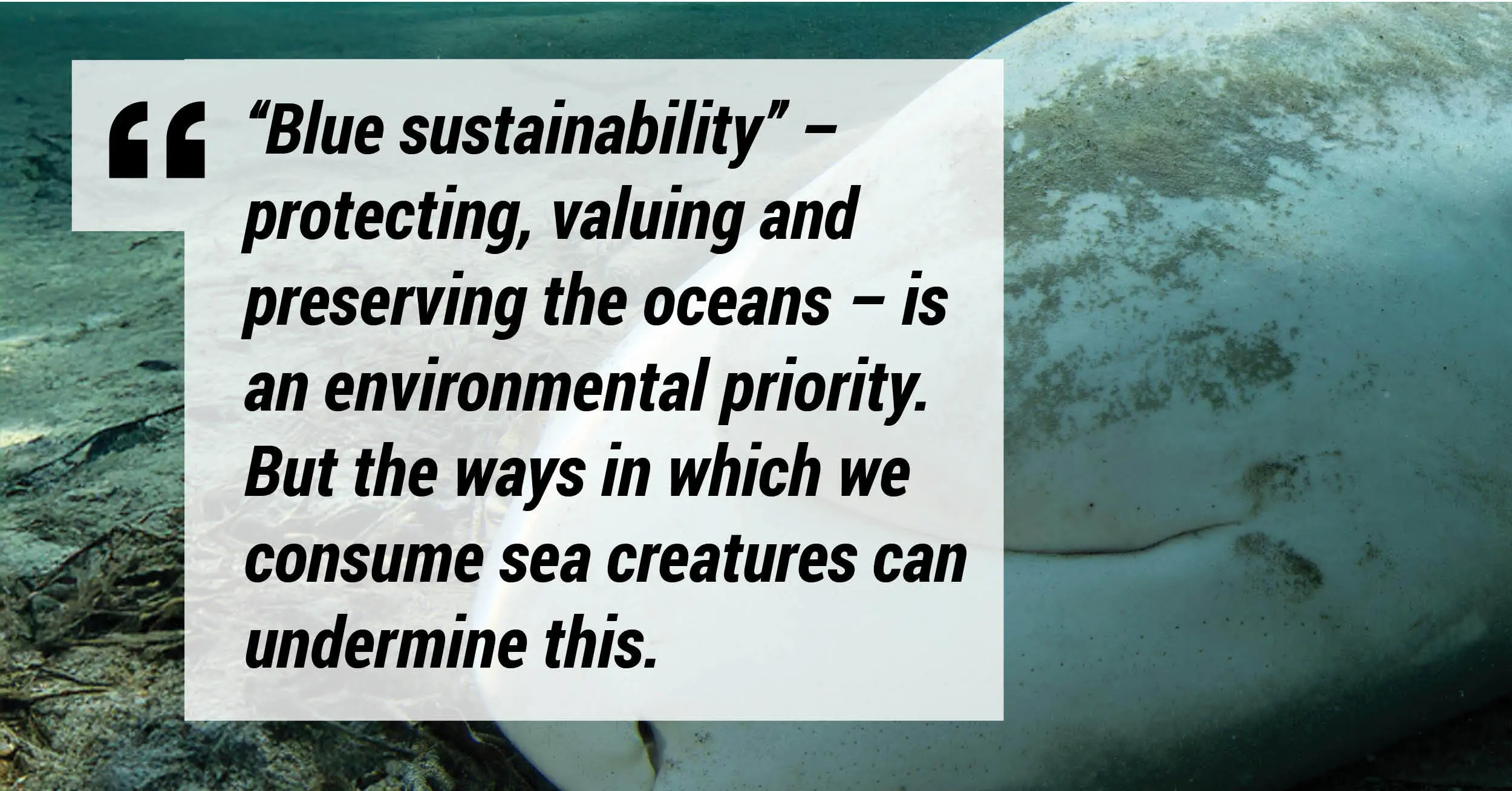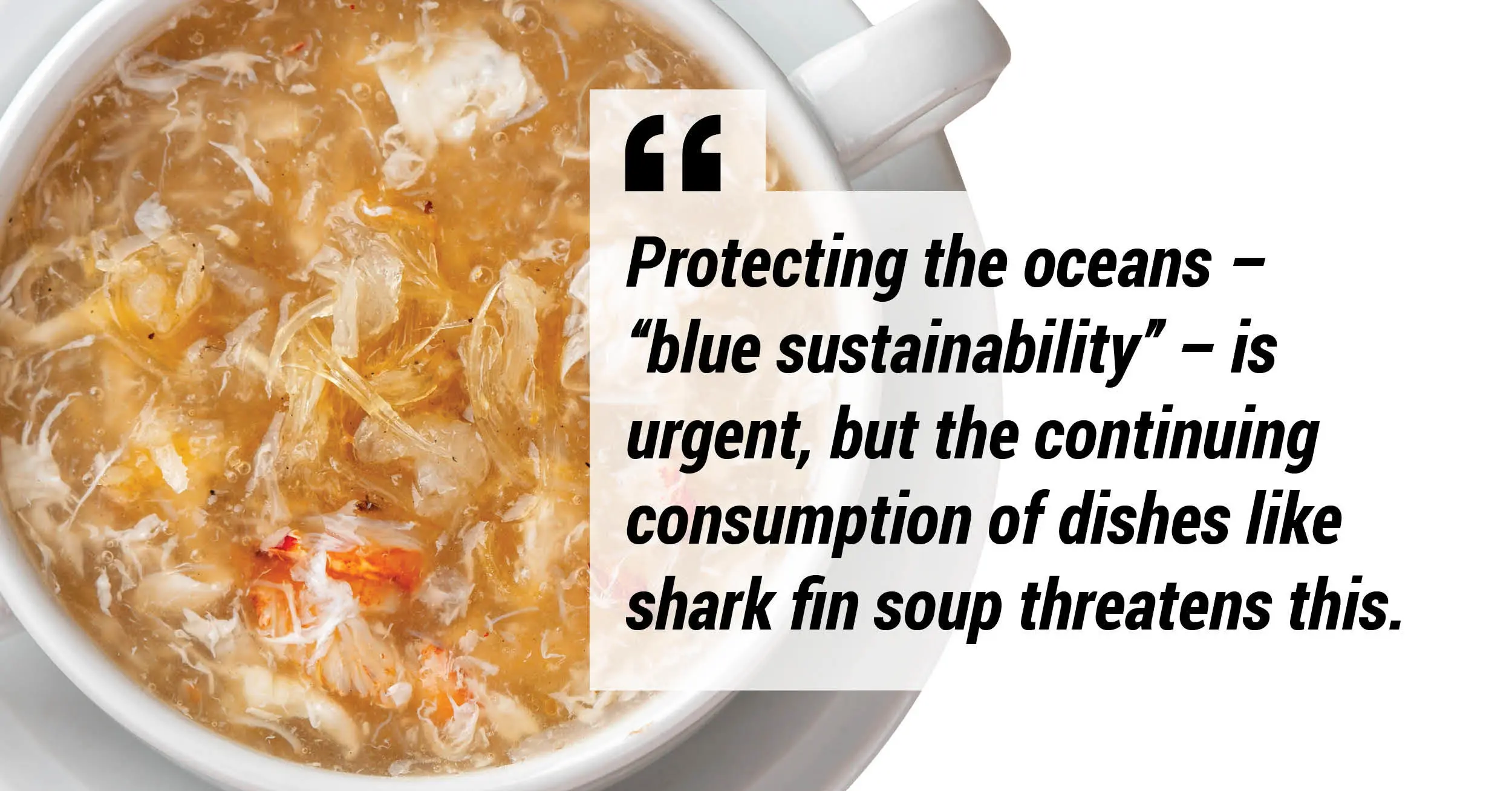Shark fin in late imperial China: making and remaking tradition

Contents
‘‘Blue sustainability’’ – protecting, valuing and preserving the oceans – is an environmental priority. But the ways in which we consume sea creatures can undermine this goal.
One key example is the consumption of shark fins. Although the brutal practice of shark finning is subject to growing bans, shark fin soup remains a luxurious food item given value and prestige through longstanding cultural traditions.
Dr Ronald C Po, Associate Professor in the Department of International History at LSE, has explored the cultural history of shark fin consumption that emerged in late imperial China. He argues that understanding how traditions such as the consumption of shark fin soup evolved gives us the power, and responsibility, to rethink these practices, for the future of sharks and the oceans more broadly.

What is shark finning?
Shark fins are cartilaginous appendages found on shark bodies, which play a key role in maintaining stability and allowing them to move through water. Sharks generally have between five to seven fins, depending on the species.
Speaking at an LSE Research Showcase talk, Dr Po explains that ‘‘shark finning is a brutal process where fins are cut from live sharks, which are then thrown back into the sea to die’’. The practice contributes to a devastating environmental picture – in 2019 alone, it was estimated that 80 million sharks were killed by fishing. Reports have also shown that shark populations have decreased more than 70 per cent globally since 1970, and over 37 per cent of sharks (alongside rays and chimaeras) are threatened with extinction.
The brutality and impact of shark finning have not gone unnoticed. Beginning in the early 1990s, the United States introduced regional restrictions on shark finning in Pacific fisheries, leading to a nationwide ban under the Shark Finning Prohibition Act of 2000. In 2019, Canada became the first G7 nation to prohibit the import and export of shark fins. Many other countries have since followed suit. Increased regulation has been accompanied by growing calls from environmentalists to stop the consumption of shark fins.
But despite the passing of regulation and environmental campaigning, Dr Po points to troubling reports that show the continuation of shark finning. In 2020, customs officers in Hong Kong intercepted a shipment of 26 tonnes of shark fins, many sourced from endangered species like hammerhead sharks. This was the largest seizure in Hong Kong’s history and, notes Dr Po, ‘‘just the tip of the iceberg’’.
Dr Po asks: ‘‘how has the consumption of shark fins continued to grow despite heavy criticism and widespread condemnation over the past few decades?’’ His answer: ‘‘it largely boils down to one iconic culinary item – shark fin soup.’’

The continuing popularity of shark fin soup
Dr Po recalls the first time he ate shark fin soup at a cousin’s wedding banquet in Hong Kong. ‘‘What struck me, even as a kid, was the ceremony of it all … this was no ordinary dish.’’ Shark fin is considered a culinary delicacy, and serving and eating shark fin soup at special occasions such as wedding banquets is a deeply rooted tradition in China, especially Southern China.
Dr Po explains how this allure reached its peak in 1980s Hong Kong, when the trend for pouring a generous portion of shark fin soup over rice became a symbol of rapid economic growth and prosperity. Shark fin soup also featured prominently in popular culture – Dr Po references Ang Lee’s film, Eat Drink Man Woman (1994) which shows the care and attention that goes into preparing and serving the dish, from the presentation to the ingredients.
‘‘Preparing a bowl of shark fin soup is no small feat’’, Dr Po observes, pointing to historical documents that outline the intricate process of making the dish. But he also notes, ‘‘we have to remember that shark fin soup relies so heavily on all those ingredients and the fancy presentation because shark fins themselves don’t actually have any taste.’’
So, given the tasteless quality of shark fins as well as their lack of nutritional value, why was shark fin chosen as the iconic centrepiece of this elaborate and luxurious dish?
How shark fins become a prized ingredient
Shark fin became a luxury during the Ming dynasty (1368-1644), Dr Po explains. This period witnessed a broader transformation of mainland China’s economic landscape. As Yulian Wu explains in the book Luxurious Networks, the era saw a growing obsession with acquiring rare and exotic goods among merchants and scholars. Dr Po stresses that ‘‘wealth at that time, during the Ming and the Qing period, wasn’t just meant to be accumulated. It was meant to be displayed. Food became a marker of prestige.’’
1300 to 1800 was also a period when trade networks grew around the world, including in China. China’s economic boom was driven by a number of factors, including rapid population growth, the restoration and expansion of China’s Grand Canal which improved internal trade, and the consolidation of maritime trade routes, which opened up the opportunity for lucrative commerce with overseas traders. ‘‘All these factors provided an ideal platform for the rise of shark fins.’’
There is another crucial factor that Dr Po identifies – ‘‘the emergence of a distinct marine food culture in early modern China’’. Up until the 11th century, seafood was not widely embraced in China. Transporting fresh seafood – haixian – posed logistical challenges. Merchants developed innovative yet expensive transportation methods, like ice-filled vessels, to preserve seafood in transit.
Given the expense of these technologies, preserved seafood – haiwei, whether salted, fried or fermented – grew in popularity from the middle of the 14th century onwards to become a staple. But the appeal and demand went beyond mere practicality. The high status given to haiwei, such as shark fins, was consolidated by upper-class consumers as well as intellectuals whose writings praised dishes like shark fin soup as luxurious symbols of gastronomic excellence.
Through the combination of these economic, cultural and social forces, ‘‘haiwei became a refined part of Chinese cuisine in its own right, especially in the Southern part of China … over time, haiwei became more than just a necessity. It evolved into a market of both status and culinary sophistication.’’
For Dr Po, this cultural history allows us to understand the roots of shark fin’s position as an iconic symbol of luxury, a status that it continues to hold to this day. ‘‘This value wasn’t grounded in science, but in tradition. Specifically, an early modern Chinese tradition where intellectuals, medicinal practitioners and elite consumers assigned it meaning, embedding it within culinary, medicinal and societal worlds.’’

Challenging the consumption of shark fins today
Dr Po’s research shows that ‘‘shark fin status was a social construct that took place in early modern China’’. Understanding this opens up new ways of challenging the consumption of shark fins in the present, even as recent studies caution that the demand for fins alone should not be blamed as the sole driver of global shark decline. As Dr Po questions: ‘‘if the prestige of shark fins is a human invention, why cling to traditions that are not only ecologically destructive but also ethically indefensible … is it cultural inertia, a resistance to external pressure, or simply a refusal to re-examine luxuries in new, sustainable ways?’’
There is growing awareness and strengthened bans on shark finning – for example, the UK banned the import and export of detached shark fins in 2023, including products like canned shark fin soup – but shark fin consumption continues across a number of regions.
For Dr Po, this situation gives an urgency to his research. ‘‘One of the underlying goals of this academic project is to align with the efforts of environmentalists by integrating a scholarly voice into their campaigns. By doing so, we can help shape a more convincing conversation that bridges cultural history with ecological responsibility.’’
Dr Po concludes that ‘‘sustainability isn’t just the domain of policymakers, marine biologists, scientists, geographers, environmentalists and so forth. Understanding how traditions evolve gives us the power to reshape them. If traditions are made, they can be unmade – but only when we understand how they took shape and when they endure.
‘‘If traditions are human-made, we have both the power, and the responsibility, to rethink them. And the choice is ours to make.’’
One encouraging sign came not long ago (on 28 Oct 2025), when China took a major legislative step toward ratifying the Biodiversity Beyond National Jurisdiction (BBNJ) Agreement, better known as the High Seas Treaty. The accord, hailed as a milestone for global ocean governance, will take effect in January 2026 and aims to protect the vast, often unregulated high seas. For all its technical detail, Dr Po sees in it something larger: a recognition that caring for the ocean is not only a scientific or political task, but also a cultural one, bound up with how societies imagine, value, and transform their traditions. "This juncture also serves as a timely reminder, or better yet, an opportune moment, to pursue related endeavours.
This LSE Research Showcase talk was written up by Rosemary Deller, Research Engagement Manager.




